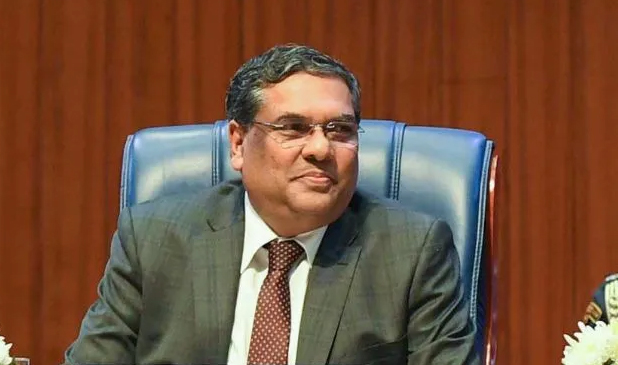Context:
Justice Sanjiv Khanna is set to become India’s 51st Chief Justice of India (CJI) after receiving government approval for his nomination by the current Chief Justice, DY Chandrachud.
More on the news:

- Justice Khanna will serve as Chief Justice for a term of six months before retiring on May 13, 2025.
- He was ranked 33rd in seniority among High Court judges but was recommended for the Supreme Court due to his merit and integrity by the Supreme Court Collegium.
- He was part of the Constitution Bench that upheld changes to Article 370 in Jammu and Kashmir.
How is CJI appointed?
- The President appoints the CJI and Supreme Court judges by warrant under his hand and seal under clause (2) of Article 124 of the Constitution.
- The outgoing CJI recommends a successor. The Union Law Minister sends this recommendation to the Prime Minister, who advises the President.
- In the Second Judges Case (1993), the SC ruled that the senior-most judge of the Supreme Court should be appointed as CJI.
- The SC collegium is led by the CJI and includes four other seniormost judges of the Supreme Court.
- The Chief Justice of India holds office until the age of 65 years
Qualifications for Chief Justice of India (CJI):
The CJI must be a citizen of India and should meet one of the following criteria:
- Have served as a judge of a High Court for at least five years, or as a judge in two or more High Courts in succession.
- Have practiced as an advocate in a High Court for at least ten years, or in two or more High Courts in succession.
- Be considered a distinguished jurist in the opinion of the President.
Removal of the CJI:
The CJI can only be removed by the President after Parliament presents an address for their removal.
This removal must be supported by a special majority in both Houses of Parliament, meaning:
- A majority of the total membership of each House and,
- A majority of at least two-thirds of the members present and voting.
Grounds for removal include proven misbehaviour or incapacity (as stated in Article 124(4)).
Powers of the CJI:
- Swearing in of the President and Governors.
- Consultation by the President with the Chief Justice of India for the appointment of judges in the Supreme Court and the High Courts.
- Appointing ad-hoc Supreme Court judges under Article 127 of the Constitution.
- Appointing retired judges to sit in the Supreme Court. [Article 128, Constitution of India]
- With the approval of the president, the Chief Justice of India can change the seat of the Supreme Court from Delhi to any other place. [Article 130, Constitution of India]
- The Chief Justice of India has the power to move High Court Judges to other High Courts. [Article 222, Constitution of India]
- The Chief Justice of India can appoint an arbitrator to resolve a financial dispute between the Centre and the states.
- The CJI is often referred to as “primus inter pares,” meaning “first among equals.”
- In addition to their judicial role, the CJI serves as the administrative head of the Supreme Court.
- The Chief Justice has the authority to assign cases to specific benches and decide how many judges will hear a case (Master of Roster).
- These administrative powers can be exercised without needing consensus from other judges and do not require an explanation.

